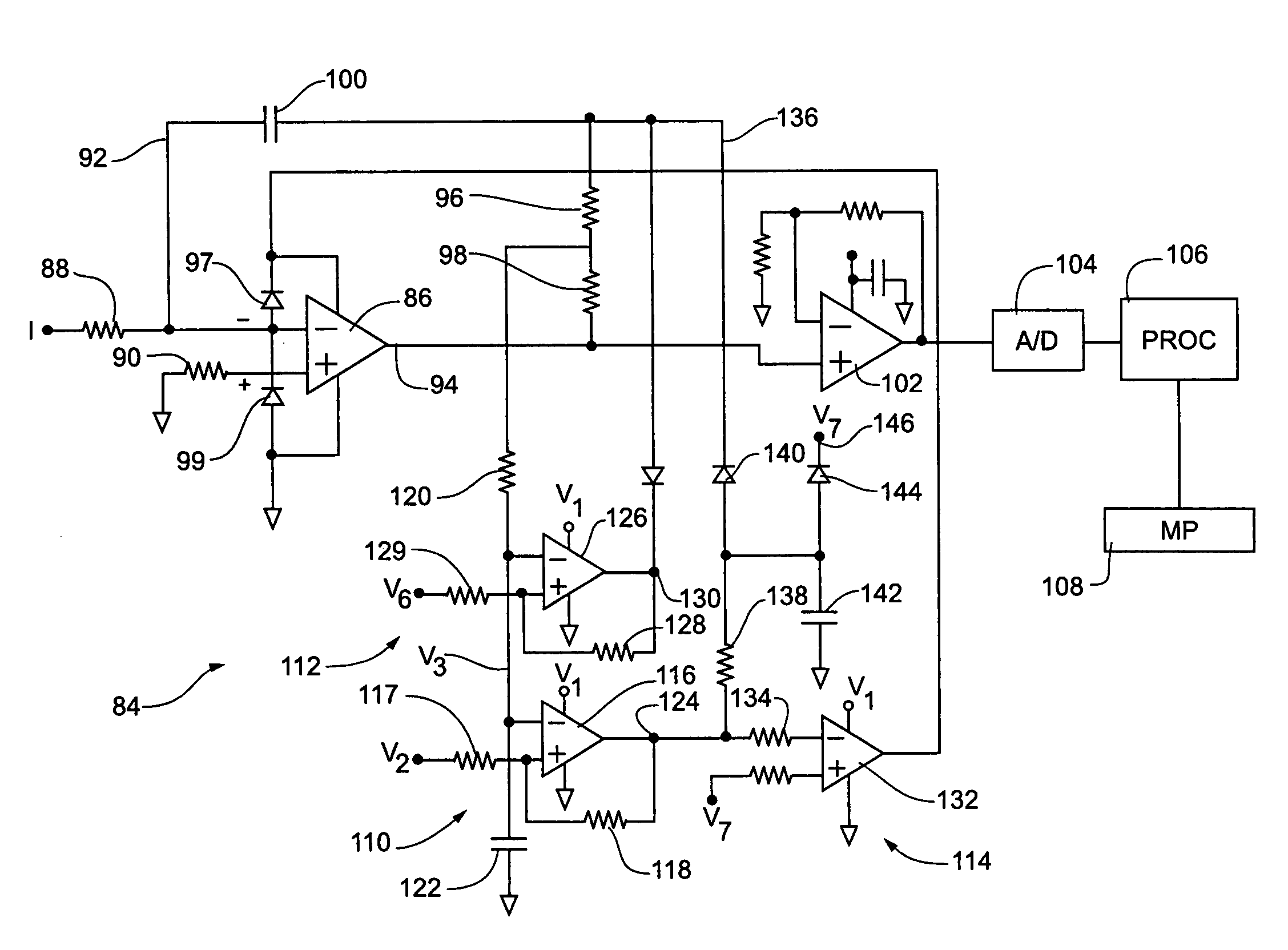Integrating electrometer amplifying circuit
a technology of amplifying circuit and electrometer, which is applied in the direction of radiation intensity measurement, instruments, material analysis, etc., can solve the problems of limiting the bandwidth of the measuring circuit, unable to generate discreet measurements, and unable to meet the needs of rapidly changing conditions, so as to prevent excess charging of the integrating capacitor, improve tracking of fluctuations, and limit the bandwidth of the integrating circuit output
- Summary
- Abstract
- Description
- Claims
- Application Information
AI Technical Summary
Benefits of technology
Problems solved by technology
Method used
Image
Examples
Embodiment Construction
[0039]Turning now to the drawings, there is shown in FIG. 2 the structural components of an aerosol particle spectrometer 16 constructed in accordance with the present invention. Primary structural components include a housing 18 and two electrode assemblies or configurations inside the housing: a center electrode assembly 20, and an assembly of multiple annular collector electrodes 22a through 22n arranged in an axially extending series, spaced apart from each other and electrically isolated from each other. Collector electrodes 22 are concentric with and surround the center electrode assembly.
[0040]Conduits associated with housing 18 guide a combination of aerosol and other gaseous flows into and out of the housing. An aerosol entry conduit 24 receives an incoming aerosol at a rate of about 10 liters per minute, at approximately atmospheric pressure. A cyclone 26 near the entry conduit removes larger particles from the aerosol, for example, particles with diameters exceeding 1 mic...
PUM
| Property | Measurement | Unit |
|---|---|---|
| diameters | aaaaa | aaaaa |
| resistances | aaaaa | aaaaa |
| travel time | aaaaa | aaaaa |
Abstract
Description
Claims
Application Information
 Login to View More
Login to View More - R&D
- Intellectual Property
- Life Sciences
- Materials
- Tech Scout
- Unparalleled Data Quality
- Higher Quality Content
- 60% Fewer Hallucinations
Browse by: Latest US Patents, China's latest patents, Technical Efficacy Thesaurus, Application Domain, Technology Topic, Popular Technical Reports.
© 2025 PatSnap. All rights reserved.Legal|Privacy policy|Modern Slavery Act Transparency Statement|Sitemap|About US| Contact US: help@patsnap.com



